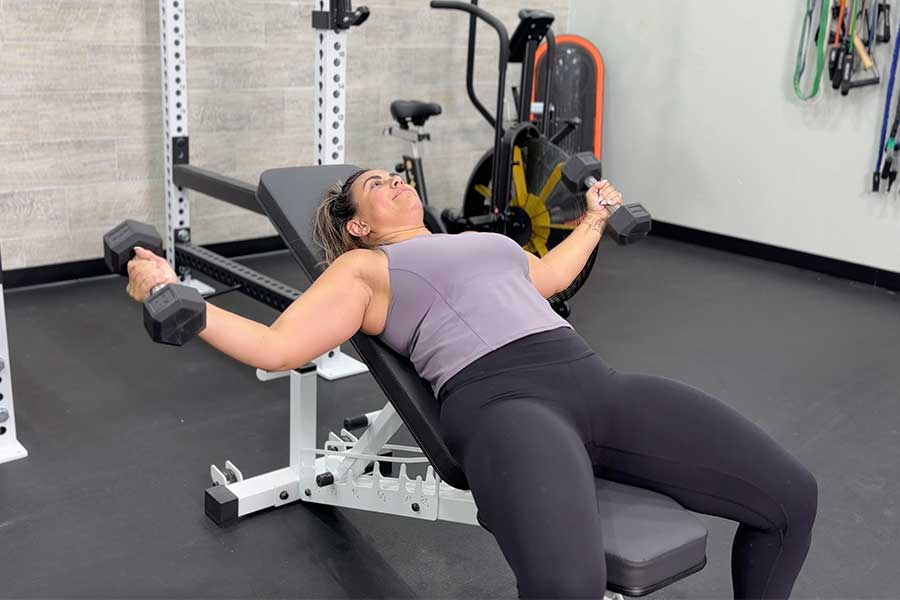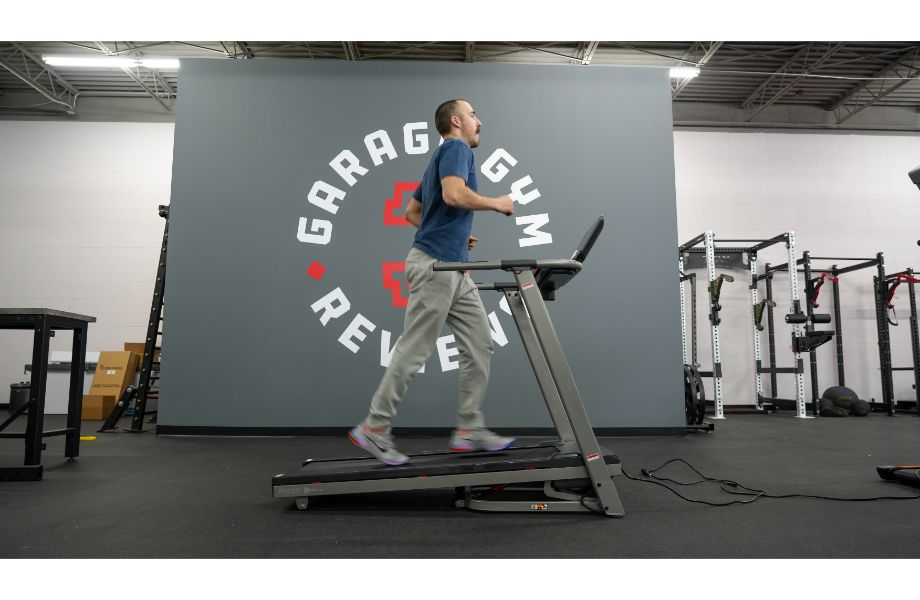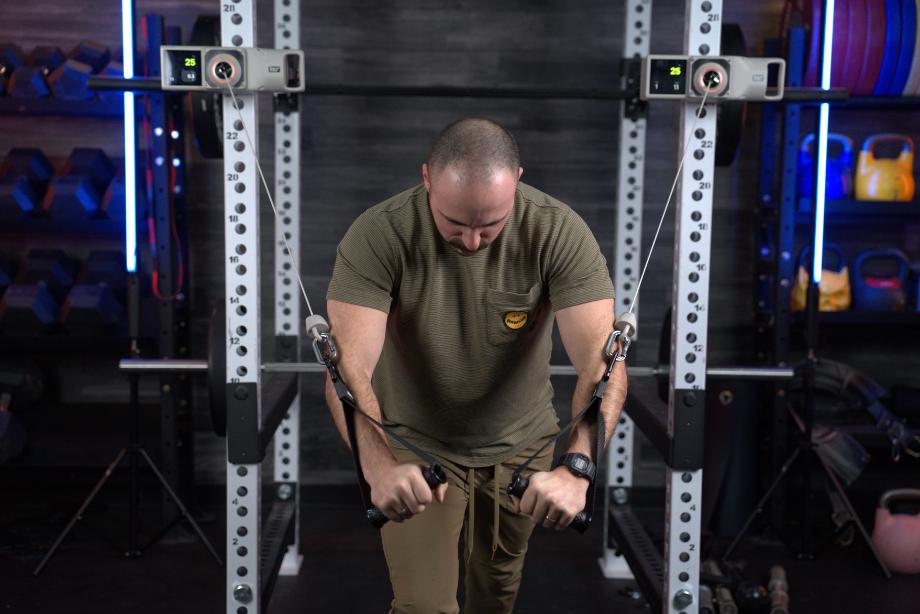There are compound exercises that train two or more muscle groups, and these should make up the majority of your workouts. Isolation exercises, on the other hand, train one muscle group. You need both to add size and strength. To fully develop the chest, you need exercises like push-ups and chest presses and isolation exercises like the dumbbell chest fly.
RELATED: What Muscles Do Push-Ups Work?
The dumbbell chest fly workout isolates the chest muscles to improve the muscular development of the chest. When done correctly, the dumbbell chest fly will take the chest through an extensive range of motion to enhance muscle-building potential. Plus, some exercisers have trouble “feeling” their chest when building it, and the chest fly workout is the cure.
Here we’ll dive into everything dumbbell chest fly for you to build the pecs of your dreams. Ready to flex? Then let’s go.
How To Do the Chest Fly Workout
Here’s how to do the dumbbell chest fly workout step by step, according to this CPT.
1. Lie supine on a flat bench with dumbbells held with a neutral grip over your chest.
2. Press the weights until your elbows are extended with the dumbbells touching. This is your starting position.
3. Lower the weights out to the sides, keeping your elbows slightly bent and feeling your shoulder blades come together.
4. When the dumbbells are at shoulder level, squeeze your chest muscles and bring the dumbbells back up to the starting position,
5. Reset and repeat.
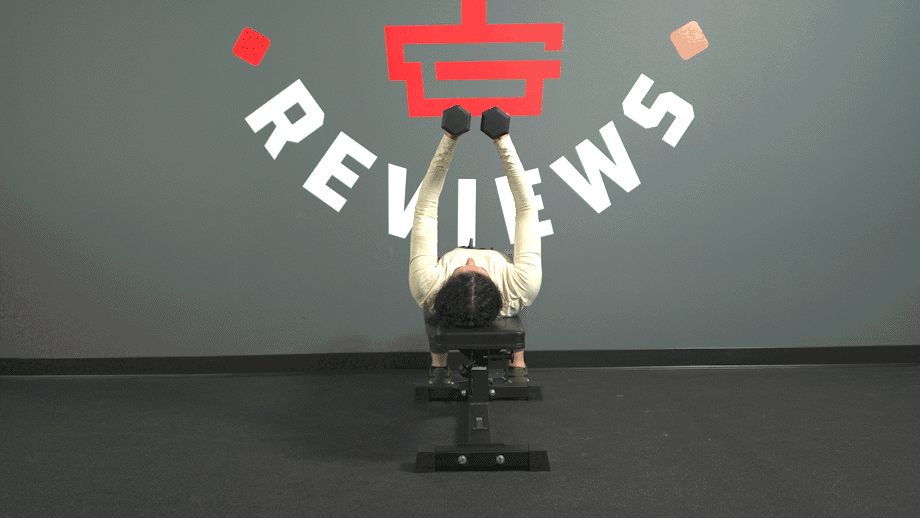
Form Tips
The chest fly is not complicated, but there are a few things to watch out for to get the best out of this exercise.
- Some people get the chest fly and dumbbell chest press confused and think they can lift the same amount of weight on both. Because the triceps are less involved, you’ll use less weight with the chest fly than with the dumbbell bench press.
- Following point one, flying too much weight will compromise form and range of motion. One of the benefits comes from the stretched position, and if you’re unable to feel the stretch in your chest, you’re leaving gains on the table.
- You can perform the dumbbell chest fly with extended elbows, but it’s not ideal because it will strain the elbow joint and limit your weight. Plus, having too much elbow bend puts more focus on the biceps and less on the chest. A little bend is just right.
Chest Fly Benefits
The dumbbell chest fly isolates the chest muscles and takes them through an extensive range of motion for potential hypertrophy gains. This is the cure if you have trouble creating a mind-muscle connection with your chest muscles. Here are a few more benefits of performing the dumbbell chest fly:
Improved Bench Press
Peanut butter and jelly are great by themselves, but the magic happens when they are put together. It’s similar to the barbell bench press and dumbbell chest fly. The dumbbell chest fly complements the bench press because it works the smaller muscles that support it, and strengthening them may improve your bench press.
RELATED: What Muscles Does the Bench Press Work?
Better Upper Body Mobility
When the chest fly is performed with a full range of motion, it can open up your chest muscles, similar to a loaded stretch. Stretching your chest muscles may help reduce upper body aches and pains, increase shoulder ROM, and reduce muscular tightness in your upper body.
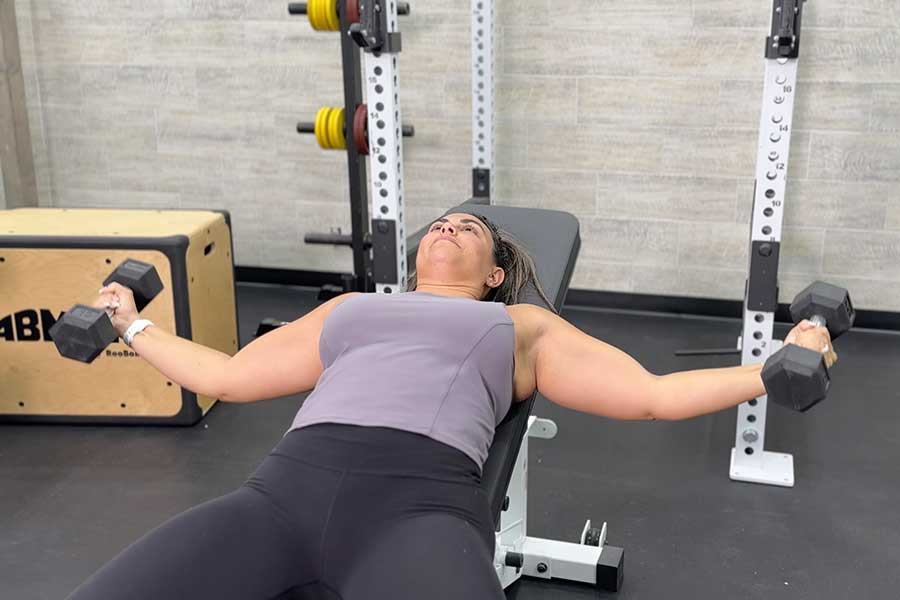
Improved Posture
The chest is the largest muscle in the upper body and is significant in assisting good posture. The length and strength of your chest muscles dictate good upper body position, and the loaded stretch with the dumbbell chest fly will help.
Muscles Worked by the Chest Fly
Triceps
Although not directly trained with the dumbbell chest fly, the triceps play an isometric role in supporting the elbow joint so the chest muscles can do their job.
Shoulders
A dumbbell chest fly trains the front and middle deltoids, assisting the chest muscles in bringing the dumbbells together at the top of the movement.
Pectorals
Your chest is your primary hugging muscle through a movement known as horizontal adduction, which this movement trains. Both your pectoralis major and minor go through a larger range of motion with the dumbbell chest fly.
RELATED: Inner Chest Workout
Chest Fly Workout Variations
Here are three dumbbell chest fly variations to train your pectoral muscles from various angles for better overall muscle development.
Standing Dumbbell Flyes
The dumbbell standing chest fly has all the benefits of the lying down variations, but this one trains the chest from a different angle. And because you’re standing, more of the muscle stabilizers are trained.
How to do it:
- Stand with your feet shoulder-width apart, and hold a pair of dumbbells by your hips.
- With a supinated (palms facing out) grip, raise the dumbbells to shoulder height, bringing them together at the top of the motion.
- Keep a light bend in your elbows and feel the muscle contraction in your chest.
- Lower down to the starting position and reset and repeat.

Incline Dumbbell Chest Fly
The flat variation works all the chest muscles, but the incline chest fly focuses on the upper chest. Changing the angle of your fly is an excellent way to target the chest muscle fibers from all angles for improved muscle development.
RELATED: Best Weight Bench
How to do it:
- Set the incline bench at a 45-degree angle.
- Holding a pair of dumbbells, lie back on the bench and bring the dumbbells together in the lockout position.
- Lower the weights out to the sides, keeping your elbows slightly bent.
- When the dumbbells are at shoulder level, squeeze your chest muscles, bring the dumbbells back to the starting position, and reset and repeat for desired repetitions.
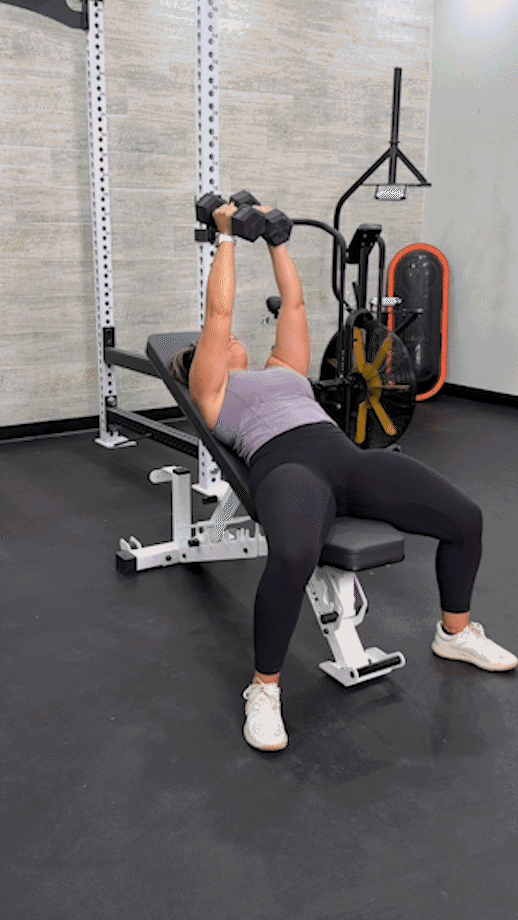
Single-Arm Dumbbell Fly
Like almost all unilateral strength training exercises, the single-arm dumbbell fly strengthens imbalances between sides, and the offset load also helps improve your core stability.
How to do it:
Note: This describes the standard version, but it can also be done on an incline, decline, and standing.
- Lie face up on a flat weight bench and hold a dumbbell in one hand with a neutral grip by your chest.
- Press it above your chest and put a slight bend in your elbow.
- Lower out to the side, keeping your elbow slightly bent.
- When you reach shoulder level, squeeze your chest muscle, and bring the dumbbell back to the starting position,
- Reset and repeat for desired reps, then switch to the other hand.
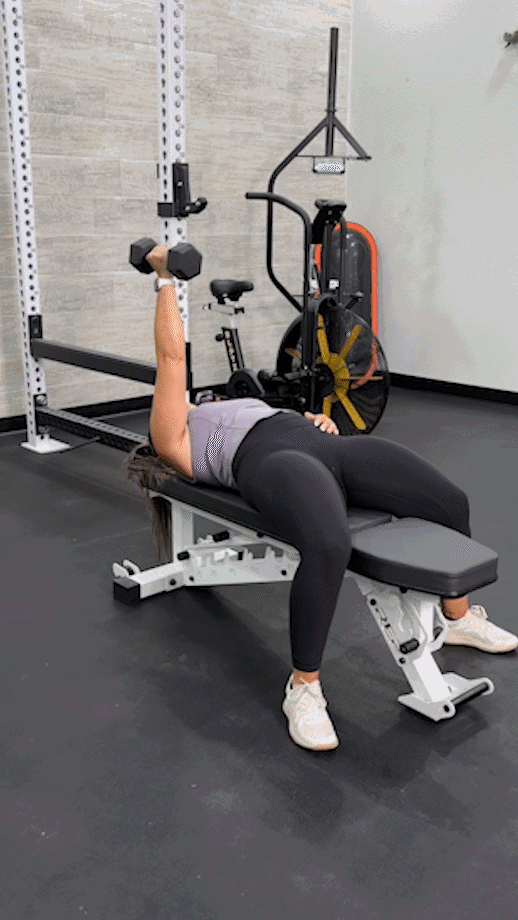
3 Common Mistakes
Starting with your elbow in the correct position is important to not put too much unnecessary stress on it. Here we will cover three more common mistakes to look out for, so you can get the best out of this exercise.
Keep Your Wrists Straight
With the dumbbell chest fly, if the dumbbells are causing wrist hyperextension, it makes it more difficult to lockout, causes less chest muscle activation, and may cause wrist pain. Instead, use a weight that allows you to keep your wrist neutral.
Too Much Weight
You could make this mistake with all exercises. Having muscle-building tension and an excellent mind-muscle connection with the chest is essential when performing a dumbbell chest fly. When both are lost, kiss the muscle-building benefits goodbye. Start with a lighter weight to ensure good form.
Range of Motion
If you cannot lower the dumbbells to shoulder level, you’re missing on the loaded stretch and leaving muscle-building gains on the table. Conversely, some exercisers think more range of motion is better, and as they try to get a bigger stretch, the anterior shoulder joint glides forward putting the shoulder at further risk.
RELATED: Upper Chest Workout
Chest Fly Workout: Final Thoughts
The dumbbell chest fly is an excellent exercise to target your chest muscles further to improve their size and strength. When performed with proper form, the dumbbell chest fly will:
- Improve muscle growth of your chest
- Stretch your chest muscles
- Improve your posture
- Strengthen your bench press
When you keep a bend in your elbows, keep your wrists straight, and perform with an adequate range of motion, you, too, can build the chest of your dreams with the chest fly.
Chest Fly Workout: Q&A
Is chest fly a good exercise?
The chest fly is a good chest exercise for your workout routine when you have good shoulder mobility and no pain in your wrists, elbows, and shoulders. Because the chest fly directly isolates the chest through a large ROM, you will build chest muscle when performed correctly.
What do chest flies workout?
Chest flyes target all three deltoid muscles and the pec major and minor for a variety of chest workout gains.
What is the best chest fly technique?
According to this personal trainer, the best chest fly technique has several components. First, you keep your wrists straight to effectively target your chest and avoid wrist pain. Second, keeping a slight bend in your elbows takes the unnecessary strain off the elbow joint, and lowering the dumbbells to chest level ensures you’re using an adequate range of motion.
Are chest flyes good or bad?
There is no good or bad exercise, only ones that fit your goals. It is a good fit if you have no pain in your upper body and good shoulder mobility and want to add chest muscle. If it’s the opposite, it is not an excellent fit for your goals.


